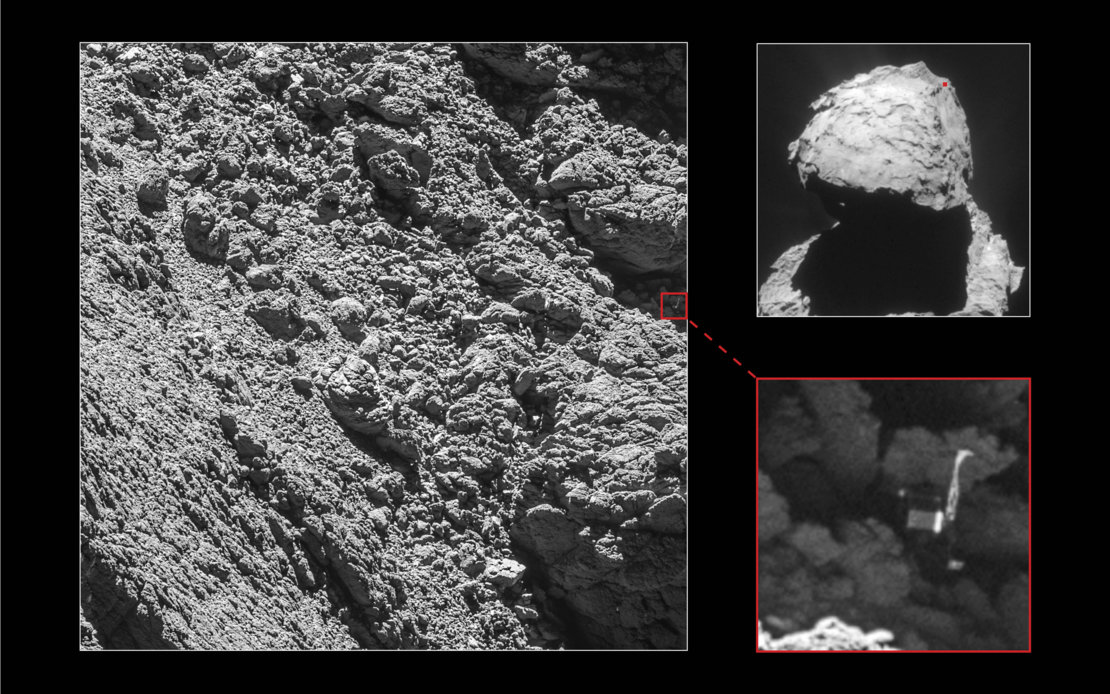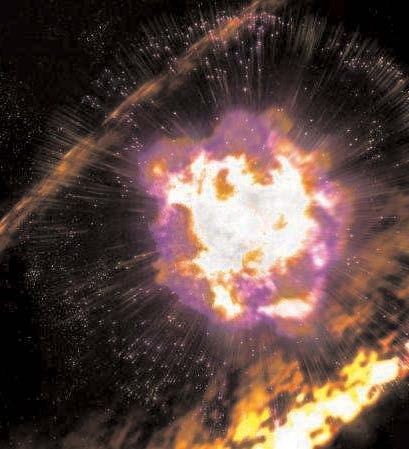
NEW DELHI (TIP): The washing machine sized comet lander Philae has been located lying upside down in a ditch on comet 67/P 682 million kilometres (424 million miles) from Earth. It was caught by a camera on board Rosetta, the European Space Agency (ESA) spacecraft orbiting the comet as it hurtles away from the sun. “THE SEARCH IS OVER! I’ve found @Philae2014!!” ESA tweeted on behalf of Rosetta.
The images were taken on 2 September by the OSIRIS narrow-angle camera as the orbiter came within 2.7 km of the surface and clearly show the main body of the lander, along with two of its three legs. This was the first sighting of Philae since its rough landing in November 2014.
The images also provide proof of Philae’s orientation, making it clear why establishing communications was so difficult following its landing on 12 November 2014.
The 100-kilogramme probe touched down on comet 67P in November 2014, after a 10-year, 6.5 billion kilometre journey piggybacking on Rosetta.
Rosetta’s mission is slated to end in less than a month with a planned crash landing on the comet’s surface. On 30 September, the orbiter will be sent on a final one-way mission to investigate the comet from close up, including the open pits in the Ma’at region, where it is hoped that critical observations will help to reveal secrets of the body’s interior structure.
“With only a month left of the Rosetta mission, we are so happy to have finally imaged Philae, and to see it in such amazing detail,” says Cecilia Tubiana of the OSIRIS camera team, the first person to see the images when they were downlinked from Rosetta yesterday.
Philae was last seen when it first touched down at Agilkia, bounced and then flew for another two hours before ending up at a location later named Abydos, on the comet’s smaller lobe.
After three days, Philae’s primary battery was exhausted and the lander went into hibernation, only to wake up again and communicate briefly with Rosetta in June and July 2015 as the comet came closer to the Sun and more power was available.
However, until today, the precise location was not known. Radio ranging data tied its location down to an area spanning a few tens of metres, but a number of potential candidate objects identified in relatively low-resolution images taken from larger distances could not be analysed in detail until recently.





Be the first to comment